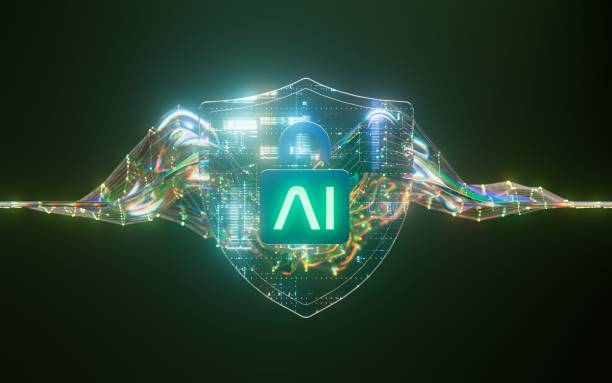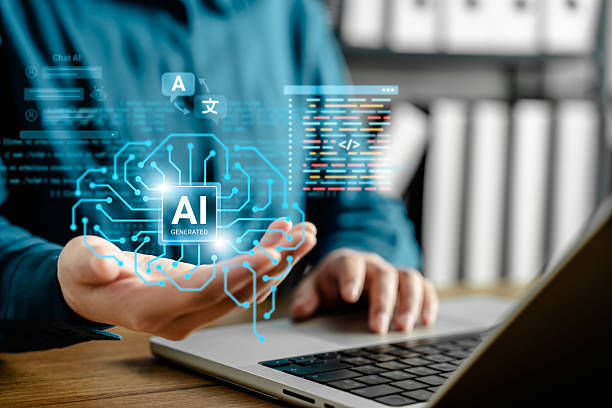What is an Artificial Intelligence Robot and How Does it Work?
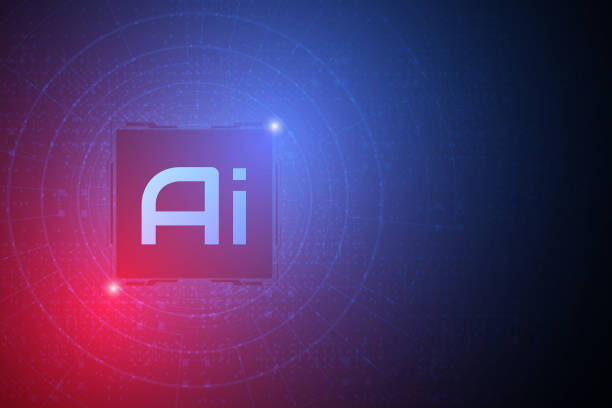
Artificial Intelligence (AI) Robot is a combination of two separate fields: robotics and artificial intelligence.
Robotics deals with the design, construction, operation, and application of robots, while artificial intelligence deals with the development of computer systems capable of performing tasks that usually require human intelligence, such as learning, reasoning, and problem-solving.
An AI Robot is a robot that, using artificial intelligence algorithms, is capable of performing more complex and intelligent tasks than traditional robots.
In short, an AI robot can sense its surroundings, analyze data, make decisions, and act.
This process usually involves the following steps:
- Sensing: The robot uses sensors to gather information from its surroundings.
These sensors can include cameras, microphones, touch sensors, temperature sensors, and so on. - Analysis: The robot uses artificial intelligence algorithms to process the collected data and extract meaningful information.
These algorithms can include neural networks, machine learning algorithms, and natural language processing algorithms. - Decision-making: The robot uses the processed information to decide what action to take.
This decision-making can be based on a set of rules, a statistical model, or a reinforcement learning algorithm. - Action: The robot uses actuators, such as motors, arms, and other tools, to perform the desired action.
AI Robots are currently used in many industries and applications, including manufacturing, healthcare, logistics, customer service, and entertainment.
As artificial intelligence advances, AI robots are expected to play an increasingly important role in our lives.
How much does losing business leads due to an unprofessional website cost you? Solve this problem forever with professional corporate website design by Rasaweb!
✅ Increase credibility and trust of potential customers
✅ Easier attraction of new business leads
⚡ Get a free consultation right now!
Diverse Applications of AI Robots in Daily Life
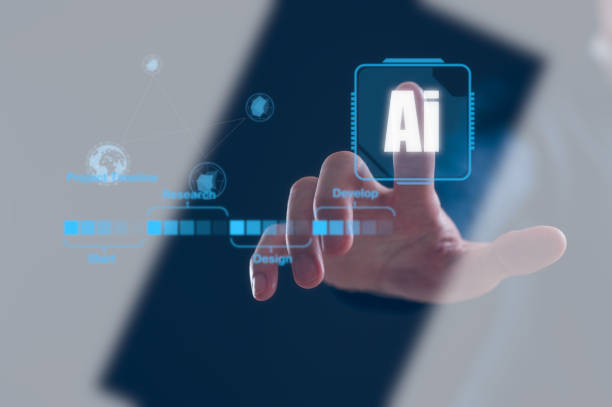
AI Robots are rapidly penetrating various aspects of our daily lives and have a wide variety of applications.
Here are some of the most important of these applications:
- Home: Robotic vacuum cleaners (Robotic vacuum cleaner on Wikipedia) can automatically clean the house using artificial intelligence algorithms.
Voice assistants such as Amazon Alexa on Wikipedia and Google Assistant on Wikipedia can perform various tasks such as playing music, setting alarms, and controlling home appliances with voice commands. - Healthcare: Surgical robots (Surgical robot en.wikipedia) can perform surgical operations with greater precision and delicacy than human surgeons.
Nurse robots can help patients with daily tasks such as eating and bathing. - Transportation: Self-driving cars can travel on roads without the need for a human driver using artificial intelligence algorithms.
Drones can be used for delivery of goods, traffic monitoring, and aerial inspections. - Customer Service: Chat robots (Chatbot on Wikipedia) can answer customer questions and solve their problems.
Service robots can help customers in restaurants, hotels, and stores. - Education: Educational robots can help students learn different concepts.
Intelligent educational systems can provide customized educational programs tailored to the individual needs of each student.
These are just a few examples of the diverse applications of AI Robots in our daily lives.
As artificial intelligence advances, these applications are expected to increase day by day.
Advantages and Disadvantages of Using AI Robots
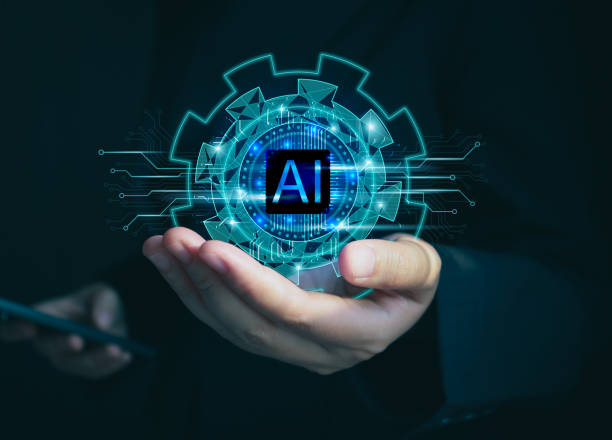
The use of AI Robots has various advantages and disadvantages, which we will examine below:
Advantages
- Increased Productivity: Robots can work continuously without fatigue or rest.
- Reduced Errors: Robots can perform their tasks with greater accuracy and precision than humans.
- Improved Safety: Robots can work in dangerous and high-risk environments instead of humans.
- Reduced Costs: In the long term, the use of robots can lead to reduced labor costs and increased profitability.
- Performing Repetitive and Tedious Tasks: Robots can automatically perform repetitive and tedious tasks, freeing humans to perform more creative and valuable tasks.
Disadvantages
- High Initial Cost: Buying and setting up robots can be expensive.
- Need for Technical Expertise: Technical expertise is required to maintain and repair robots.
- Job Losses: The use of robots can lead to job losses for some people.
- Ethical Issues: The use of robots in some areas, such as military and security, can raise ethical issues.
- Dependence on Technology: Excessive dependence on robots can disrupt the performance of organizations and industries in the event of technical problems.
Ultimately, the decision to use AI Robots should be made by considering its advantages and disadvantages and according to the specific conditions of each organization or industry.
| Advantages | Disadvantages |
|---|---|
| Increased Productivity | High Initial Cost |
| Reduced Errors | Need for Technical Expertise |
| Improved Safety | Job Losses |
| Reduced Costs | Ethical Issues |
What Will the Future of AI Robots Be?

The future of AI Robots is very bright and full of potential.
With the rapid advancement of artificial intelligence and robotics technologies, robots are expected to play a much more important role in our lives in the future.
Some of the key trends that are shaping the future of AI Robots include:
- Becoming Smarter: Robots are gradually becoming smarter and will be able to perform more complex and independent tasks.
They can learn from their experiences through machine learning and improve their performance. - Becoming More Flexible: Robots are becoming more flexible and will be able to adapt to different environments and perform a wider variety of tasks.
They can understand their surroundings and automatically adapt to changes in them using sensors and artificial intelligence algorithms. - Becoming Cheaper: With increased production and technological advancements, the cost of building robots is decreasing and they are becoming available to more people and organizations.
- Increased Collaboration with Humans: Robots will increasingly collaborate with humans and help them perform various tasks.
They can act as assistants, colleagues, or even friends to humans.
In the future, AI Robots will be used in a wide range of fields, including:
- Industry: Robots will automatically manage production lines, check the quality of products, and prevent accidents.
- Healthcare: Robots will assist surgeons in performing complex surgical operations, care for patients, and develop new drugs.
- Transportation: Self-driving cars will safely and efficiently transport people and goods.
- Services: Robots will provide services to customers in restaurants, hotels, and stores.
Of course, there are also challenges in the path of developing AI Robots, including ethical, security, and social issues.
However, given the high potential of this technology, we expect to see significant advances in the field of AI Robots in the future.
Did you know that 94% of first impressions of a company are related to its website design?
Rasaweb helps you make the best first impression by providing professional corporate website design services.
✅ Create a professional and reliable image of your brand
✅ Easier attraction of potential customers and improved online ranking
⚡ Get a free corporate website design consultation
Types of AI Robots Based on Application
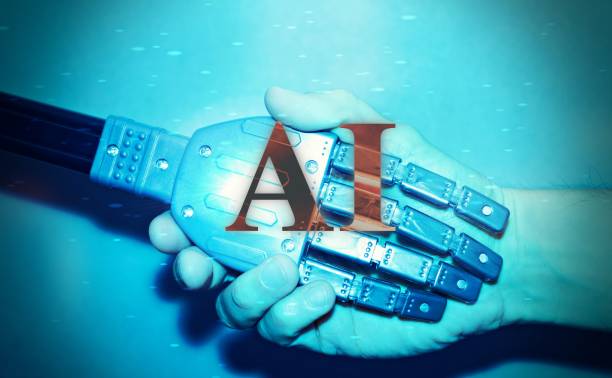
AI Robots can be categorized based on their different applications.
Here are some of the main types:
- Industrial Robots: These robots are used to perform repetitive and heavy tasks in industrial environments.
They can assemble parts, perform welding, paint, and move materials. - Service Robots: These robots are used to provide services to humans in various environments.
They can serve food in restaurants, welcome guests in hotels, and care for patients in hospitals. - Medical Robots: These robots are used to assist doctors in performing surgical operations, diagnosing diseases, and providing treatment.
They can perform with greater accuracy and delicacy than humans and help reduce medical errors. - Military Robots: These robots are used to perform various tasks in military environments.
They can act as soldiers, spies, or guards and help reduce human casualties. - Space Robots: These robots are used to explore space, collect information, and conduct scientific experiments.
They can work in harsh and inaccessible environments for humans. - Personal Robots: These robots are used to help people perform daily tasks.
They can clean the house, take care of children, and assist the elderly.
In addition to these categories, AI Robots can also be categorized based on the type of artificial intelligence used.
For example, robots that use neural networks can recognize patterns and make decisions.
Robots that use machine learning algorithms can learn from their experiences and improve their performance.
As artificial intelligence advances, new types of AI Robots with innovative applications are expected to be created.
Challenges of Developing and Implementing AI Robots

The development and implementation of AI Robots face numerous challenges.
These challenges can be technical, economic, ethical, and social.
Here are some of the most important of these challenges:
- Technical Challenges
- Developing Artificial Intelligence Algorithms: Creating artificial intelligence algorithms that are capable of performing complex and independent tasks is a major challenge.
These algorithms must be able to understand the environment, learn from experiences, and make decisions in different situations. - Developing Sensors and Actuators: Robots need advanced sensors and actuators to be able to interact with their surroundings.
These sensors and actuators must be accurate, reliable, and resistant. - Integrating Hardware and Software: Integrating the hardware and software of robots is a complex challenge.
This integration must be done in such a way that the robot can work efficiently and safely. - Economic Challenges
- Development and Implementation Costs: Developing and implementing AI Robots can be expensive.
This cost includes research and development costs, the cost of purchasing parts and equipment, and the cost of training the workforce. - Return on Investment: The return on investment in AI Robot projects may be long.
This can be an obstacle for some organizations. - Ethical Challenges
- Accountability: If an AI robot causes damage, who will be responsible? This question is an important ethical challenge that needs to be answered.
- Privacy: AI robots can collect a lot of information about people.
How can people’s privacy be protected? - Discrimination: Artificial intelligence algorithms can be discriminatory.
How can discrimination be prevented in the use of AI robots? - Social Challenges
- Job Losses: The use of AI robots can lead to job losses for some people.
How can this be prevented? - Inequality: The use of AI robots can increase inequality in society.
How can this be prevented? - Social Acceptance: Some people may be opposed to the use of AI robots.
How can social acceptance of this technology be increased?
Overcoming these challenges requires collaboration between researchers, industrialists, policymakers, and the public.
The Impact of AI Robots on the Labor Market

The impact of AI Robots on the labor market is a controversial topic.
Some believe that robots will cause many people to lose their jobs, while others believe that robots will create new jobs and help increase productivity.
The reality is that the impact of AI Robots on the labor market is complex and depends on various factors.
Some jobs are more at risk of automation, while others are less at risk.
Jobs that involve repetitive and predictable tasks are more at risk of automation.
Jobs that involve creativity, problem-solving, and human interaction are less at risk of automation.
However, even if robots cause some jobs to be lost, they will likely create new jobs as well.
These new jobs may be in areas such as the development, maintenance, and repair of robots, the development of artificial intelligence algorithms, and the provision of robot-related services.
In addition, AI Robots can help increase productivity and allow people to focus on more creative and valuable tasks.
This can lead to increased income and improved quality of life.
In order to benefit from the advantages of AI Robots and prevent its negative effects, we must take action, including:
- Education and Skills Training: People need to learn new skills that are compatible with the needs of the new labor market.
- Developing Supportive Policies: Governments should develop supportive policies to help people who lose their jobs.
- Developing New Technologies: We must develop new technologies that help people collaborate with robots.
By taking these actions, we can use AI Robots as a powerful tool to improve our lives.
| Jobs at Risk | Lower Risk Jobs |
|---|---|
| Production Line Workers | Software Engineers |
| Telephone Operators | Marketing Specialists |
| Drivers | Doctors |
Security and Data Protection in AI Robots

Security and data protection in AI Robots is a very important issue.
AI Robots can collect a lot of information about people, organizations, and their surroundings.
This information can include personal information, financial information, confidential information, and sensitive information.
If this information falls into the wrong hands, it can have serious consequences.
For example, hackers can use this information to steal identities, commit financial fraud, conduct industrial espionage, and carry out cyberattacks.
Therefore, it is necessary to take serious measures to protect data in AI Robots.
These measures can include the following:
- Data Encryption: Data should be encrypted before storage and transmission.
This makes it impossible for hackers to read the data even if they gain access to it. - Access Control: Access to data should be restricted and granted only to those who need it.
- Strong Authentication: Individuals should be strongly authenticated before accessing data.
This can include the use of strong passwords, two-factor authentication, and biometrics. - Software Updates: Robot software should be updated regularly to fix security vulnerabilities.
- Activity Monitoring: Robot activities should be monitored regularly to identify any suspicious activity.
- Training: People should be trained on security risks and how to protect data.
By taking these measures, we can protect data in AI Robots and prevent the serious consequences of security breaches.
Does your current corporate website not reflect your brand’s credibility and strength as it should? Rasaweb solves this challenge for you with professional corporate website design.
✅ Increase the credibility and trust of visitors
✅ Attract more targeted customers
⚡ Click to get a free consultation!
Ethical Issues Surrounding AI Robots

AI Robots raise complex ethical issues.
These issues include accountability, privacy, discrimination, autonomy, and impact on human relationships.
- Accountability: If an AI Robot causes damage, who will be responsible? Will the robot’s manufacturer, the robot’s owner, or the robot itself be responsible? This question is an important ethical challenge that needs to be answered.
- Privacy: AI Robots can collect a lot of information about people.
How can people’s privacy be protected? Should there be restrictions on the collection and use of information by robots? - Discrimination: Artificial intelligence algorithms can be discriminatory.
For example, a facial recognition algorithm may not correctly recognize people with certain skin tones.
How can discrimination be prevented in the use of AI Robots? - Autonomy: AI Robots are gradually becoming more autonomous.
Should we allow robots to make their own decisions without human intervention? What limits should there be on robot autonomy? - Impact on Human Relationships: AI Robots can affect human relationships.
For example, some people may prefer to interact with a robot rather than a human.
This can lead to isolation and reduced social skills.
To solve these ethical issues, discussion and exchange of views between researchers, industrialists, policymakers, and the public is needed.
Laws and regulations must be enacted to regulate the use of AI Robots in a way that protects human rights and values.
How to Learn and Train an AI Robot
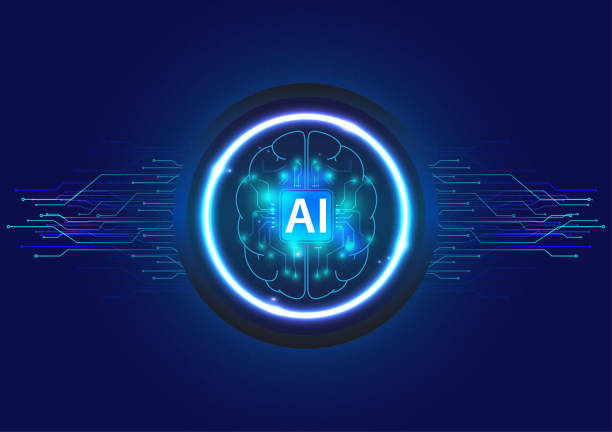
Learning and training an AI Robot is done through various methods, which are mentioned below:
- Supervised Learning: In this method, a training dataset is provided to the robot that includes inputs and expected outputs.
The robot uses this data to create a machine learning model that can map inputs to expected outputs. - Unsupervised Learning: In this method, a training dataset is provided to the robot that includes only inputs.
The robot uses this data to discover hidden patterns and structures in the data. - Reinforcement Learning: In this method, the robot learns how to act in a particular environment by trial and error.
The robot receives a reward for performing correct actions and is penalized for performing incorrect actions.
The robot uses this feedback to learn a policy that specifies how to take action in any situation. - Deep Learning: This method is a type of machine learning that uses deep neural networks for learning.
Deep neural networks are capable of learning complex and abstract patterns from data.
In addition to these methods, there are other methods for learning and training AI Robots, such as transfer learning, active learning, and multimodal learning.
Choosing the right method for learning and training an AI Robot depends on various factors, including the type of task, the type of data, and the amount of available resources.
Frequently Asked Questions
| Question | Answer |
|---|---|
| What is an AI Robot? | It is a robot that uses artificial intelligence capabilities to understand the environment, reason, learn, and make decisions to perform complex tasks independently. |
| What is the main difference between a regular robot and an AI robot? | AI robots can learn and adapt to their environment, while regular robots usually operate based on fixed and pre-determined programs. |
| In what fields are AI robots used? | In fields such as industry (production lines), medicine (robotic surgery), services (customer support, smart vacuum cleaners), exploration (space and underwater), and entertainment. |
| How do AI robots learn? | They acquire new skills through machine learning algorithms (Machine Learning) and deep learning (Deep Learning), by analyzing big data and identifying patterns. |
| Can AI robots have emotions? | Currently, no. They can identify or simulate emotions, but they do not have the actual experience of emotions like humans. |
| What are the most important advantages of using AI robots? | Increased productivity, reduced human error, performing dangerous or repetitive tasks, and providing new and efficient services. |
| What challenges exist in the development of AI robots? | The need for abundant and high-quality data, algorithm complexity, ethical issues, cybersecurity, and high research and development costs. |
| Are AI robots dangerous to humans? | No, with the observance of safe design principles and ethical regulations. Concerns are more related to social and economic impacts such as changes in the labor market. |
| What is an example of an AI robot in everyday life? | Smart vacuum cleaner robots (such as Roomba) that automatically map and clean the house, or smart voice assistants (such as Siri and Alexa). |
| How is the future of AI robots predicted? | They are expected to become smarter, more autonomous, and capable of more complex interactions with humans and will play a more prominent role in industry, medicine, transportation, and daily life. |
and other services of Rasa Web Advertising Agency in the field of advertising
Intelligent SEO: A combination of creativity and technology for digital branding by customizing the user experience.
Intelligent Data Analysis: A fast and efficient solution to increase sales by focusing on attractive user interface design.
Intelligent Google Ads: An innovative platform for improving customer behavior analysis with intelligent data analysis.
Intelligent Website Development: A dedicated service for online growth based on proprietary programming.
Intelligent UI/UX: A new service for increasing customer attraction through SEO-oriented content strategy.
And more than hundreds of other services in the field of internet advertising, advertising consulting, and organizational solutions
Internet Advertising | Advertising Strategy | Advertorial
Resources
Applications of Robotics and Artificial Intelligence
,Artificial Intelligence and Robots in Iran’s Arms Industry Have Become Indigenous
,Smart Robot Artificial Intelligence Smart Robot Artificial Intelligence
,Artificial Intelligence in Cars
? Are you ready to transform your business in the digital world? Rasaweb Digital Marketing Agency, with expertise in SEO, online advertising, and dedicated website design, is your trusted partner on the path to growth. Contact us today for a powerful presence on the web!
📍 Tehran, Mirdamad Street, Next to the Central Bank, South Kazerun Alley, Ramin Alley No. 6

